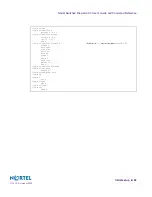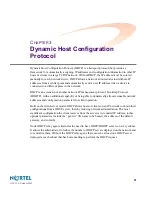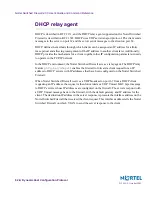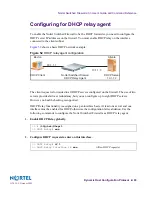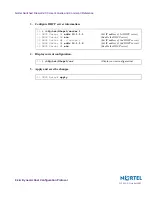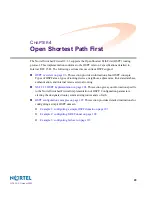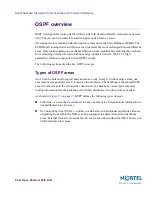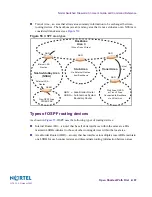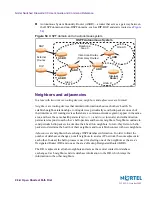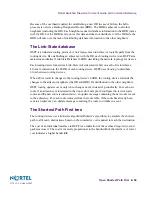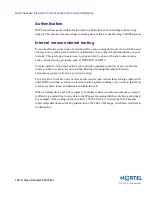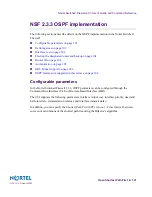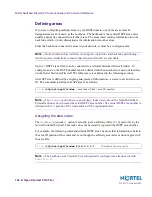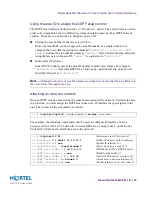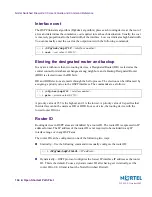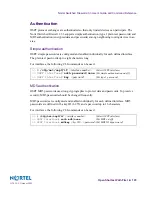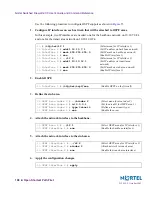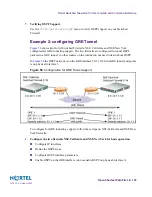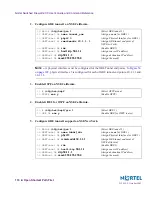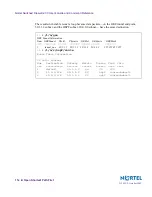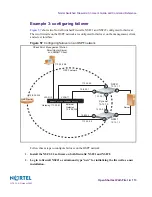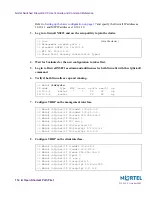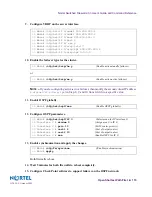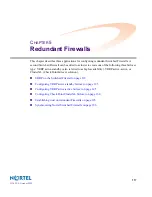
Nortel Switched Firewall 2.3.3 User’s Guide and Command Reference
102
Open Shortest Path First
213455-L, October 2005
Defining areas
If you are configuring multiple areas in your OSPF domain, one of the areas must be
designated as area 0, known as the
backbone
. The backbone is the central OSPF area and is
usually physically connected to all other areas. The areas inject routing information into the
backbone which, in turn, disseminates the information into other areas.
Since the backbone connects the areas in your network, it must be a contiguous area.
N
OTE
–
Nortel Switched Firewall does not support virtual links and backbone partitioning—
which requires virtual links to ensure that all parts of the AS are reachable.
Up to 17 OSPF areas (0-16) can be connected to an Nortel Switched Firewall cluster. To
configure an area, the OSPF number must be defined and then attached to a network interface
on the Nortel Switched Firewall. The full process is explained in the following sections.
An OSPF area is defined by assigning
two
pieces of information—an
area index
and an
area
ID
. The command to define an OSPF area is as follows:
N
OTE
–
The
aindex
option above is an arbitrary index used only on the
Nortel Switched
Firewall
and does not represent the actual OSPF area number. The actual OSPF area number is
defined in the
id
portion of the command as will be explained below.
Assigning the area index
The
aindex
<area index>
option is actually just an arbitrary index (1-16) used only by the
Nortel Switched Firewall. This index does not necessarily represent the OSPF area number.
For example, the following commands define OSPF area 1 because that information is held in
the area ID portion of the command, even though the arbitrary area indexes do not agree with
the area IDs:
N
OTE
–
The backbone area 0 (aindex 0) is automatically configured as a transit area with
i
d
0.0.0.0
.
>> #
/cfg/net/ospf/aindex
<area index>
/id
<area ID number>
>> #
/cfg/net/ospf/aindex 2/id 0.0.0.1
(Use index 2 to set area 1)


